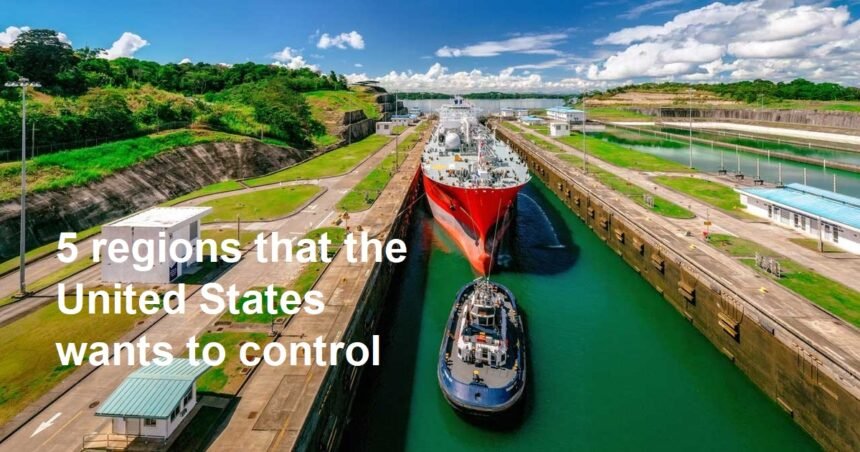The United States, as a preeminent global power, has long been involved in shaping international affairs through a mix of diplomacy, military presence, and economic influence. Over time, various regions have attracted significant attention due to their strategic, economic, or geopolitical importance. Among these, five areas often come up in discussions: the Gaza Strip in Palestine, Canada, Ukraine’s rare earth deposits, Greenland, and the Panama Canal. While the notion that the U.S. seeks to “control” these regions is frequently debated and sometimes veers into speculative territory, an analysis of each area reveals why they are considered valuable in the U.S. strategic calculus.
- The Gaza Strip (Palestine)
The Gaza Strip is one of the most volatile regions in the Middle East. Although the U.S. does not seek to govern Gaza directly, its strategic interests in the region are clear. The United States has long been a staunch ally of Israel and has invested heavily in diplomatic and military support to maintain stability in the area. Gaza’s location makes it a critical piece in the broader Middle Eastern geopolitical puzzle, affecting regional security, humanitarian issues, and counterterrorism efforts. American policymakers are interested in the region not only for its direct impact on Israel’s security but also as a bellwether for broader regional dynamics that influence global stability. - Canada
Canada, a close neighbor and one of America’s strongest allies, might seem an unlikely candidate when discussing regions that the U.S. wants to “control.” In reality, Canada’s significance lies in its economic integration, cultural ties, and shared security interests with the United States. However, some fringe analyses suggest that the U.S. benefits from a deeply interdependent relationship, where its influence can extend into shaping policies and economic strategies in its northern neighbor. While Canada remains fully sovereign and its government robustly defends its independence, the strategic partnership between the two nations has led some observers to debate the balance of influence, especially in the realms of energy, trade, and defense. - Ukraine’s Rare Earth Deposits
Ukraine has recently emerged as an area of interest due to its untapped rare earth resources. Rare earth elements are essential for manufacturing high-tech devices, renewable energy technologies, and advanced military equipment. With global supply chains currently dominated by a few countries, the potential to diversify and secure new sources of these critical materials is a priority for many U.S. allies. American strategists see Ukraine’s mineral wealth as a way to reduce dependency on traditional suppliers, bolstering economic and national security. The U.S. has supported initiatives aimed at exploring and developing these resources in Ukraine, although any notion of “control” is more about strategic partnerships and influence than outright ownership. - Greenland
Greenland’s strategic importance has grown in recent years due to its unique geographical location and abundant natural resources. The island occupies a key position in the Arctic, a region that is becoming increasingly important as climate change opens up new maritime routes and opportunities for resource extraction. The United States has shown keen interest in Greenland, highlighted by discussions about increasing its military presence there and investing in infrastructure improvements. Although Greenland remains an autonomous territory under Danish sovereignty, the U.S. sees it as a vital asset for projecting power in the Arctic and securing economic interests in a rapidly changing region. - The Panama Canal
Historically, the Panama Canal has been one of the most strategically valuable maritime chokepoints in the world. Controlled by the United States for much of the 20th century, the canal was eventually transferred to Panama in 1999. Nonetheless, it continues to be a linchpin of global trade and an area where U.S. strategic interests remain deeply embedded. The Canal’s importance lies in its ability to facilitate rapid military and commercial movement between the Atlantic and Pacific Oceans. The U.S. continues to maintain a robust presence in the region to ensure the canal remains secure and open, a critical component of its global maritime strategy.
In conclusion, while the idea that the United States seeks outright control over the Gaza Strip, Canada, Ukraine’s rare earth resources, Greenland, and the Panama Canal may be more speculative than factual, there is no doubt that these regions are of immense strategic importance. Whether through military alliances, economic partnerships, or diplomatic engagement, the U.S. continually works to secure its interests in these key areas, shaping a global order that supports its long-term security and prosperity.













